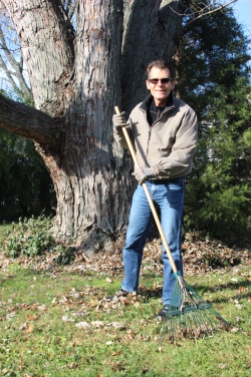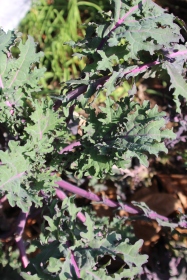I wasn’t looking for a new apple; it found me.
On a chilly morning at the end of October I picked my last two pecks of apples, Goldrush and Staymen Winesap at Lynd’s Fruit Farm in Pataskala, Ohio. At the checkout, Andy Lynd offered me an apple that hasn’t been named yet.
Imagine a glowing, golden, perfectly formed apple accented with a red flush. My first bite was apricots and summer wine with a hint of mango and kiwi. The texture was crystally, crunchy… there are no other words to describe its texture. And, like a fine wine, the best flavor notes lingered; reminding me of the perfume of apple flowers.
It is dangerous to be driving and eating an apple that is this good.
Even though the apple picking season has ended, there are plenty of other apple-based pleasures to anticipate. While Michael is looking forward to the lull in the garden tending, I haven’t left fall – yet. I am thinking of what all my apples will turn into: muffins, apple pie, applesauce, baked apples, dried apples and more.
And, I am dreaming of that golden Atalanta* apple that I hope to pick soon at Lynd’s. Next year?
If you would like to explore more apple offerings, check out Debra’s article, “The Apple ”, beautifully illustrated by Brooke Albrecht, in the Fall Issue of EdibleColumbus.
* For those who may not remember the myth… Atalanta was a fierce huntress devoted to Diana. She avoided marriage by setting up a challenge: she would only marry the man who could best her in a foot race. Any suitor who could not outrun her would forfeit his life. Hippomenes (or Melanion, in some renditions) fell in love with Atalanta and appealed to Aphrodite for help. Aphrodite gave Hippomenes three golden apples along with the instruction to throw one out each time Atalanta started to pass him. These enticing apples slowed Atalanta enough to allow Hippomenes to finish first and end Atalanta’s unmarried state.













